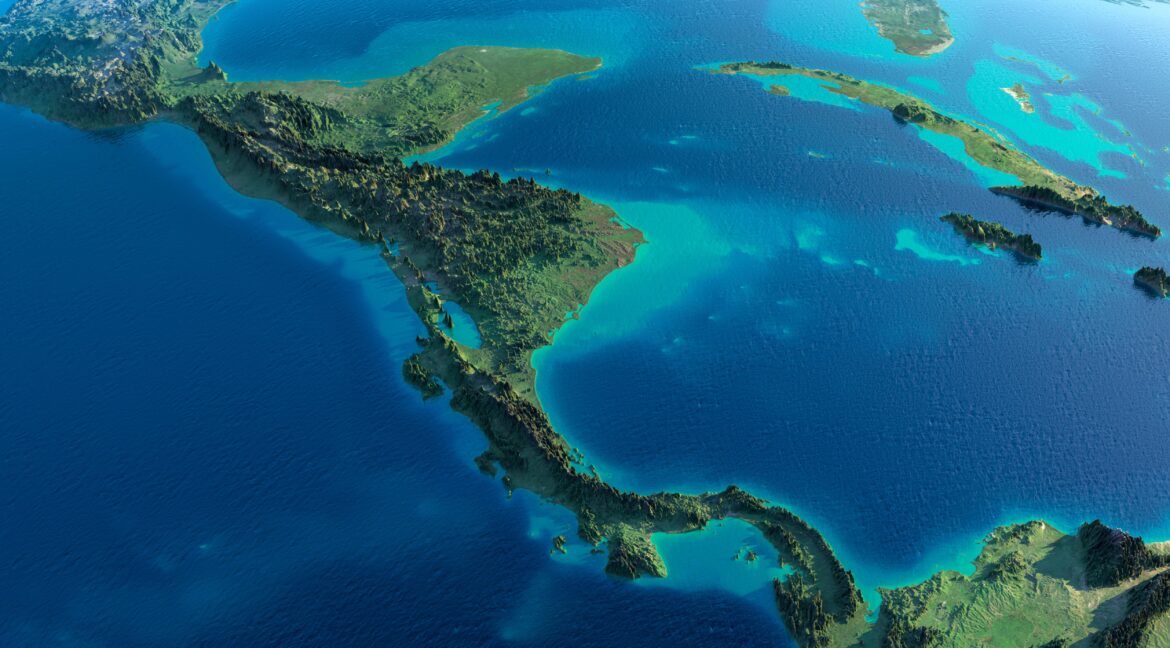If you’re not from earthquake country – and by that, we don’t mean a country with earthquakes but rather, a specific place that experiences earthquakes – then you may wonder (with a little bit of concern, even) what earthquakes in Costa Rica are really like.
Let’s start with this: You won’t even feel the vast majority of earthquakes here. They’re that mild – that ignorable!
And that’s important to know because we’ll also say that Costa Rica experiences earthquakes every day. Yes, every day! But, we’ll get into that in a moment. First, we’d like to discuss why. Because the why is fascinating!
Welcome to the Pacific Ring of Fire
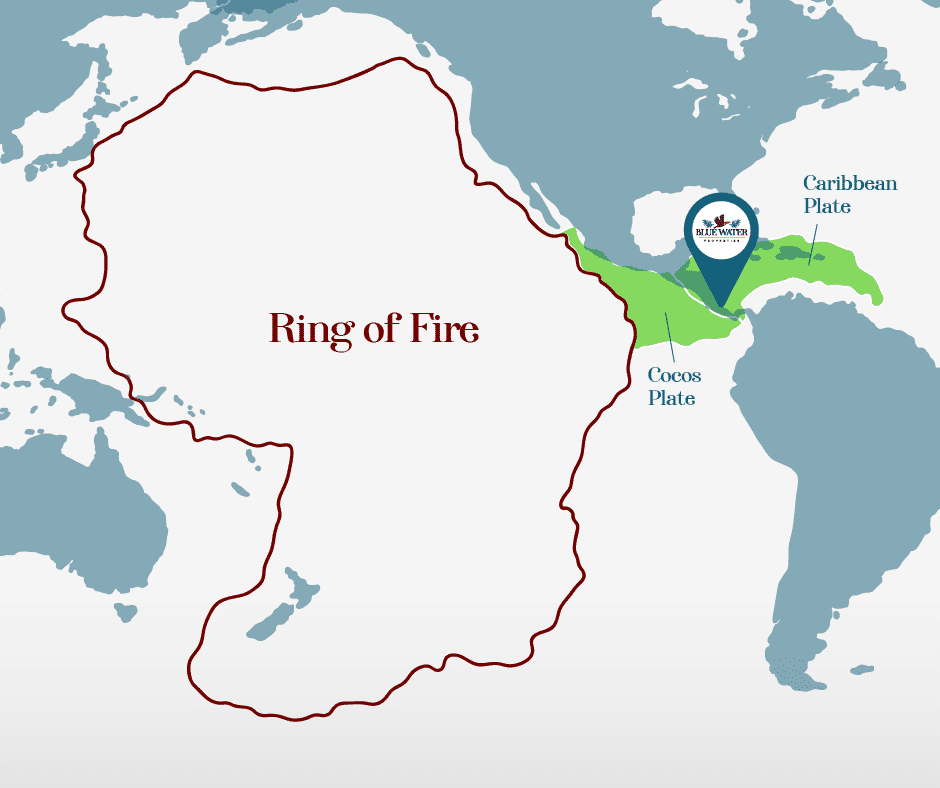
Earthquakes in Costa Rica are all courtesy of the Pacific Ring of Fire, a 25,000-mile (40,000-kilometer) string of volcanoes (many underwater) that forms an arc around the Pacific Ocean: From the tip of New Zealand and Tonga, north through Indonesia and the Philippines, and into Japan, before sweeping east toward Alaska and sweeping south into California, Central America, and South America.
This arc – the Pacific Ring of Fire – is home to most of the world’s volcanoes (above sea level) and a whopping 90% of the world’s earthquakes. That’s because this “ring” houses 450+ volcanoes and releases over three-quarters of the Earth’s seismic energy.
While the Ring of Fire is said to have existed for about 35 million years, many of its resident volcanoes are much older. These include Costa Rica’s contributions – at least 200 volcanic formations, some of which date back 65 million years. (Discover the volcanoes of Costa Rica.)
Geology 101: Seismic Activity & Plate Tectonics
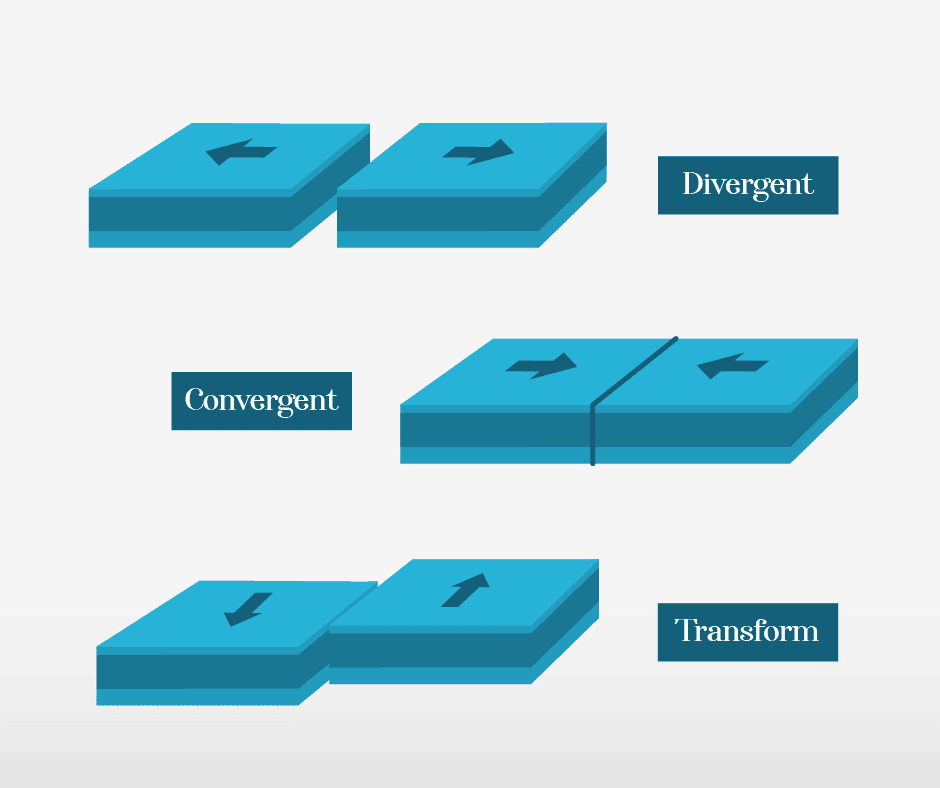
All this seismic energy and volcanic activity comes courtesy of plate tectonics. We don’t want to go full educational lecture on you (although if you do want that, here’s a good video!) but we do want to explain this fascinating natural phenomenon.
In brief, scientists believe that the Earth’s surface is not one, solid mass but rather a collection of shifting lithospheric plates, or slabs. These plates have been in motion since the Earth’s beginnings (and are responsible for what many of us know as continental drift).
As the plates collide and separate, slide and subduct other plates, the Earth’s surface changes. (This is how Central America, which was once underwater, was pushed above the ocean’s surface!) Additionally, as these shifting plates collide, they create subduction zones, which in turn create earthquakes, which in turn trigger volcanism. Hence, plate tectonics lead to earthquakes; earthquakes can create volcanoes; thus, the Pacific Ring is an arc of almost continuous volcanic activity (notably, much if it now dormant and extinct).
Amidst it all, Costa Rica is a critical location for the world’s tectonic activity. Here, the Cocos and Caribbean Plates meet. This mesmerizing collision of natural forces creates unique conditions; specifically, the Cocos Plate often subducts (meaning: drives downward) the lighter Caribbean Plate, which supports much of the Central American region.
All this to say, as the Cocos Plate exerts its power over the Caribbean Plate, Central America rumbles and rolls. And with it, so shakes Costa Rica!
Earthquakes in Costa Rica: What to Expect
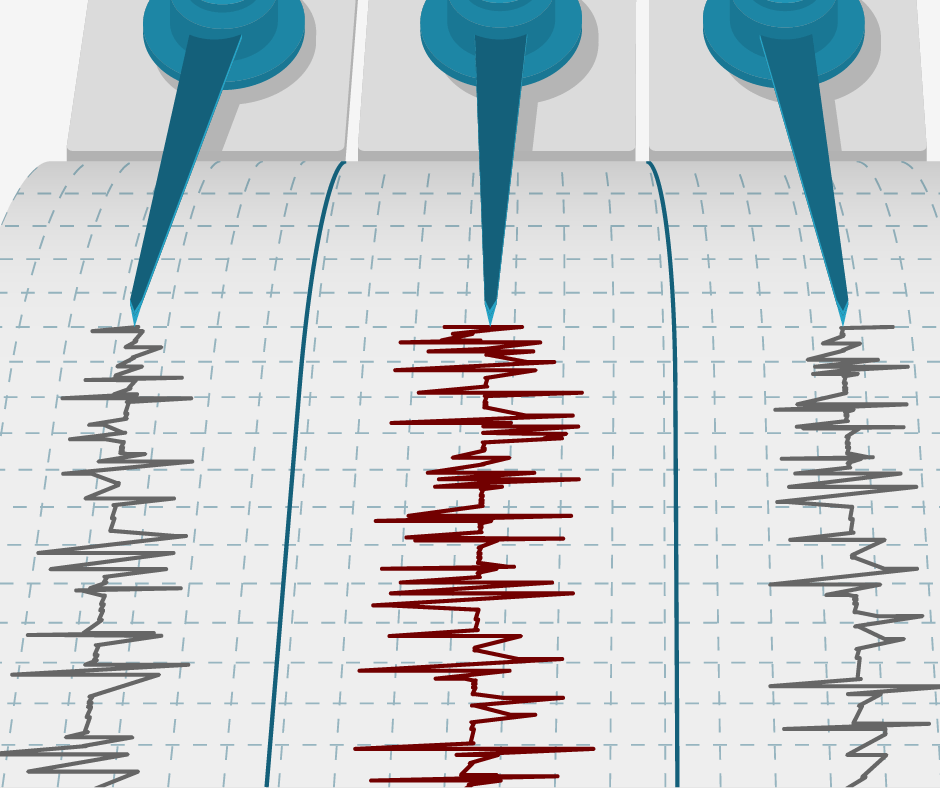
Okay, you say – you’re less concerned with why there are earthquakes in Costa Rica and more concerned about how they affect everyday life. We get it.
So, let’s start here: Most of the time, most earthquakes do not affect everyday life. At all. In fact, depending on your level of attention, you’re not likely to notice the vast majority.
Costa Rica’s Volcanological and Seismological Observatory at the National University (acronym: OVSICORI-UNA, often shortened to just OVSICORI, pronounce ohv-see-core-ee), records daily seismic activity. Upon review, you’ll see frequent earthquakes – sometimes, a few a day! That said, you’ll see that many are around magnitude 4.0 or below and, beyond that, many more are deep (dozens of kilometers) beneath the earth’s surface.
Of course, there’s also the occasional quake that makes its presence known: it hits 4.5+ magnitude (where most of us begin to notice it) and/or it’s shallow (a couple of kilometers below sea level). And still, for most of these quakes, you’ll only feel a slight shaking or rolling of the ground.
Earthquake Preparedness: How to Live on the Ring of Fire
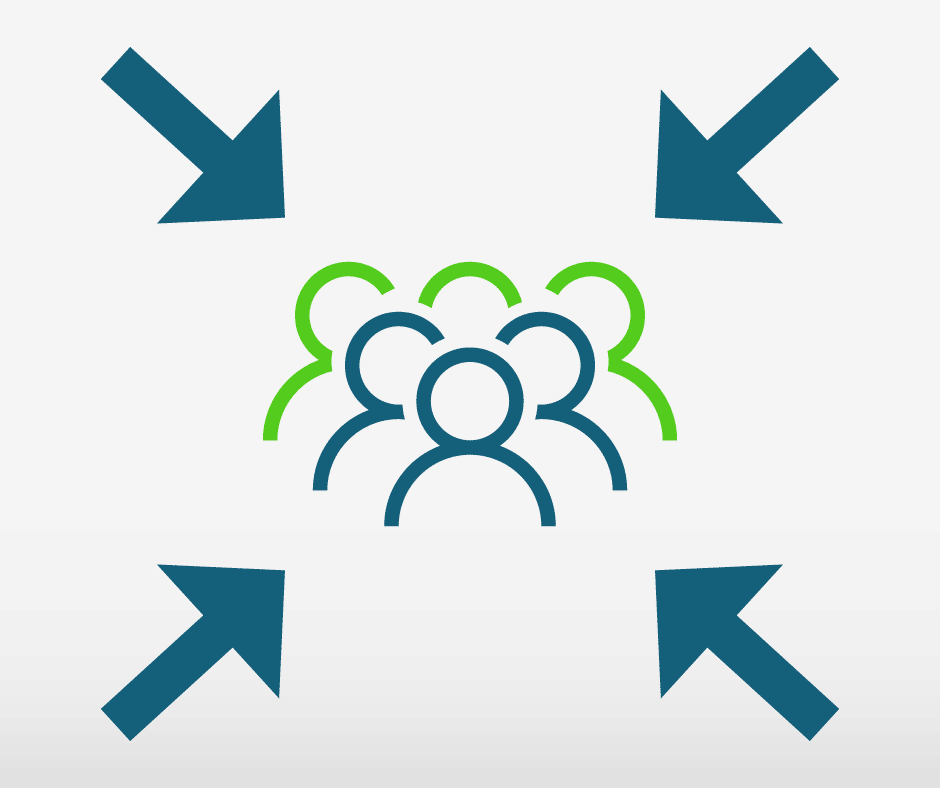
All that said, major earthquakes are typically pegged at around one per decade. Therefore, it’s important to be prepared.
We know this can sound alarming, but it’s fairly straightforward. Depending on where you’re from, you’ve probably already practiced preparedness, be it against tornadoes, hurricanes, or wildfires. This is similar.
Luckily, Costa Rica also has an excellent and efficient Natural Disaster Early Warning System, which provides real-time data on volcanic ash advisories, seismograms, and more. That said, no advance warning system is perfect 100% of the time, so again – preparedness is key.
Before we outline the steps, we’ll emphasize once again: The vast majority of earthquakes are mild. You will not feel them, let alone need to take any action. And then, for most of the earthquakes you do feel, you still won’t need to do anything, as they are mild and pass quickly. The key is in preparing and practicing for what to do, should you need to do something. And with that in mind:
- Secure Your Belongings: The biggest “everyday life” advice we can give you is to safely secure your furniture and belongings. Fasten heavy furniture to the wall and use earthquake or museum putty to secure fragile belongings in place. (We also recommend using putty, in addition to any hanging hardware, to secure hanged and framed photos and art.)
- Follow OVSICORI: Follow OVSICORI-UNA on Facebook or Instagram for near-real-time updates and information on seismic activity and earthquakes in Costa Rica.
- Learn Your Community’s Public Meeting Points: Urban areas and many towns have evacuation routes and community meeting points, called puntos de reunion; they are typically marked by signage that includes four arrows (NE, SE, SW, NW) pointing to a center dot. This is deemed a safe space if you experience an earthquake while out in public.
- Designate a Safe Spot in/around Your Home: It’s important to know where to go, were it necessary. The safest spots in most homes include hallways with no windows (and preferably, no class-encased lighting), in a closet (again, with no windows), beneath sturdy furniture (like a table), and against an interior wall far from tall furniture and windows.
- Practice Earthquake Procedure: The standard is to drop, cover, and hold on. Practice doing so in your designated safe space.
- Stash a Disaster Kit: Recommendations include water, food with a long shelf-life, a flashlight (with spare batteries or a crank flashlight), a whistle, masks, a multi-tool, and a first aid kit. See full recommendations.
It’s also important to know when to stay put vs. when to evacuate. This is your emergency evacuation plan. The general rule of thumb says that if you’re indoors, stay there; what’s more, if you’re in a relatively safe space and an earthquake has already begun, stay there.
- DO stay indoors, if you’re already there. If you have time (especially at the beginning of a quake) to reach your designated safe space, then do.
- DO get out of the kitchen, as it’s considered one of the most dangerous places in the house.
- If you are outdoors, DO get into the open, as far from buildings, tree limbs, power lines, and other things that could fall on you.
- DO get away from heavy furniture, windows, and fireplaces, even if you don’t have time to reach your designated safe spot.
- If you are driving, DO stop carefully. Try to park away from falling objects, like utility poles. DO stay inside your car until the earthquake has passed.
- If you are near the ocean, DO stay aware of tsunami warnings. Please follow the Comisión Nacional de Emergencias (Costa Rican National Emergency Commission) to stay up to date on tsunami warnings.
- If you are in the mountains, DO be aware of landslides, falling rocks, and other dangers.
We hope these tips and links will help you prepare and, perhaps, quell some concerns. After all, knowledge and agency are keys to conquering fear or anxiety.
Want to Know More about Living in Costa Rica?
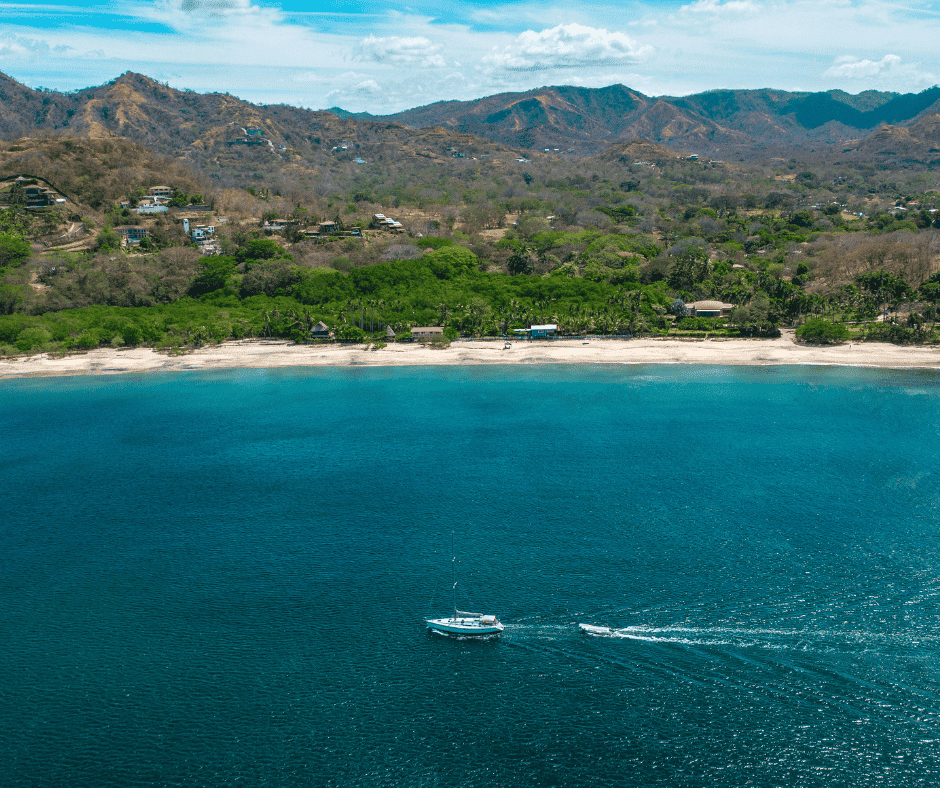
So many people make Costa Rica living a dream but not a reality. If you’re determined to be one of the lucky few, then you’re already part of the way there.
Helping people like you just happens to be one of our fortes. At Blue Water Properties, we are happy to help you in any way we can. We can talk about locations and costs of living, schools, and lifestyle. We can refer you to residency attorneys or other sources of information, and share our own experiences and lessons learned.
We also recently debuted our Costa Rica relocation department, which helps people just like you make their own successful and dream-fulfilling transition to live in Costa Rica. We promise honest advice rooted in real, hard-earned expertise – no sugar-coated truths or side-stepping the tough stuff. We’re here to share the whole picture – not just the carefully curated, postcard-perfect bits.
Please, download our free eBook. Reach out on socials. Sign up for updates. And look into our services. We look forward to your getting in touch and can’t wait to get started!
